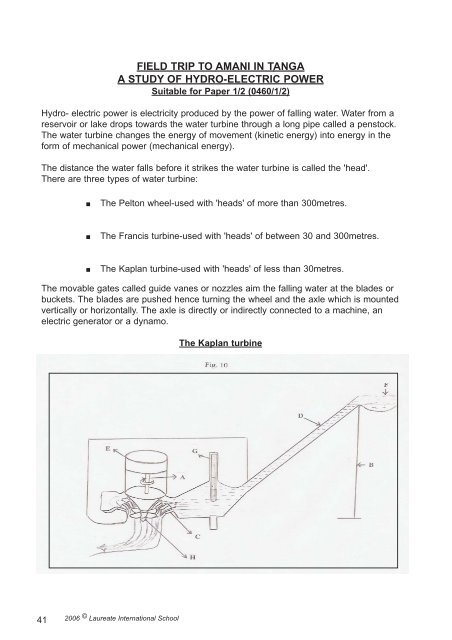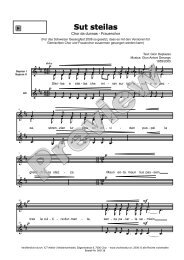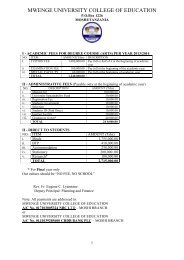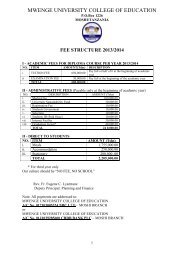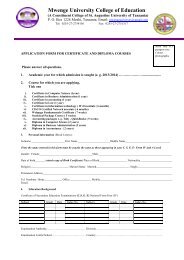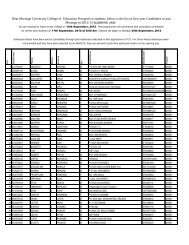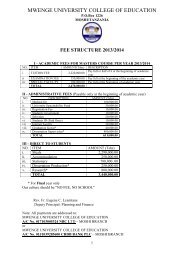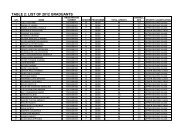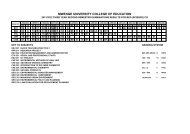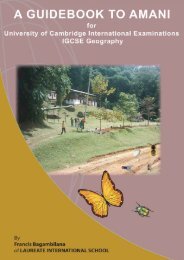Guidebook to Amani - MWUCE
Guidebook to Amani - MWUCE
Guidebook to Amani - MWUCE
You also want an ePaper? Increase the reach of your titles
YUMPU automatically turns print PDFs into web optimized ePapers that Google loves.
FIELD TRIP TO AMANI IN TANGA<br />
A STUDY OF HYDRO-ELECTRIC POWER<br />
Suitable for Paper 1/2 (0460/1/2)<br />
Hydro- electric power is electricity produced by the power of falling water. Water from a<br />
reservoir or lake drops <strong>to</strong>wards the water turbine through a long pipe called a pens<strong>to</strong>ck.<br />
The water turbine changes the energy of movement (kinetic energy) in<strong>to</strong> energy in the<br />
form of mechanical power (mechanical energy).<br />
The distance the water falls before it strikes the water turbine is called the 'head'.<br />
There are three types of water turbine:<br />
. The Pel<strong>to</strong>n wheel-used with 'heads' of more than 300metres.<br />
. The Francis turbine-used with 'heads' of between 30 and 300metres.<br />
. The Kaplan turbine-used with 'heads' of less than 30metres.<br />
The movable gates called guide vanes or nozzles aim the falling water at the blades or<br />
buckets. The blades are pushed hence turning the wheel and the axle which is mounted<br />
vertically or horizontally. The axle is directly or indirectly connected <strong>to</strong> a machine, an<br />
electric genera<strong>to</strong>r or a dynamo.<br />
The Kaplan turbine<br />
41<br />
2006 © Laureate International School


